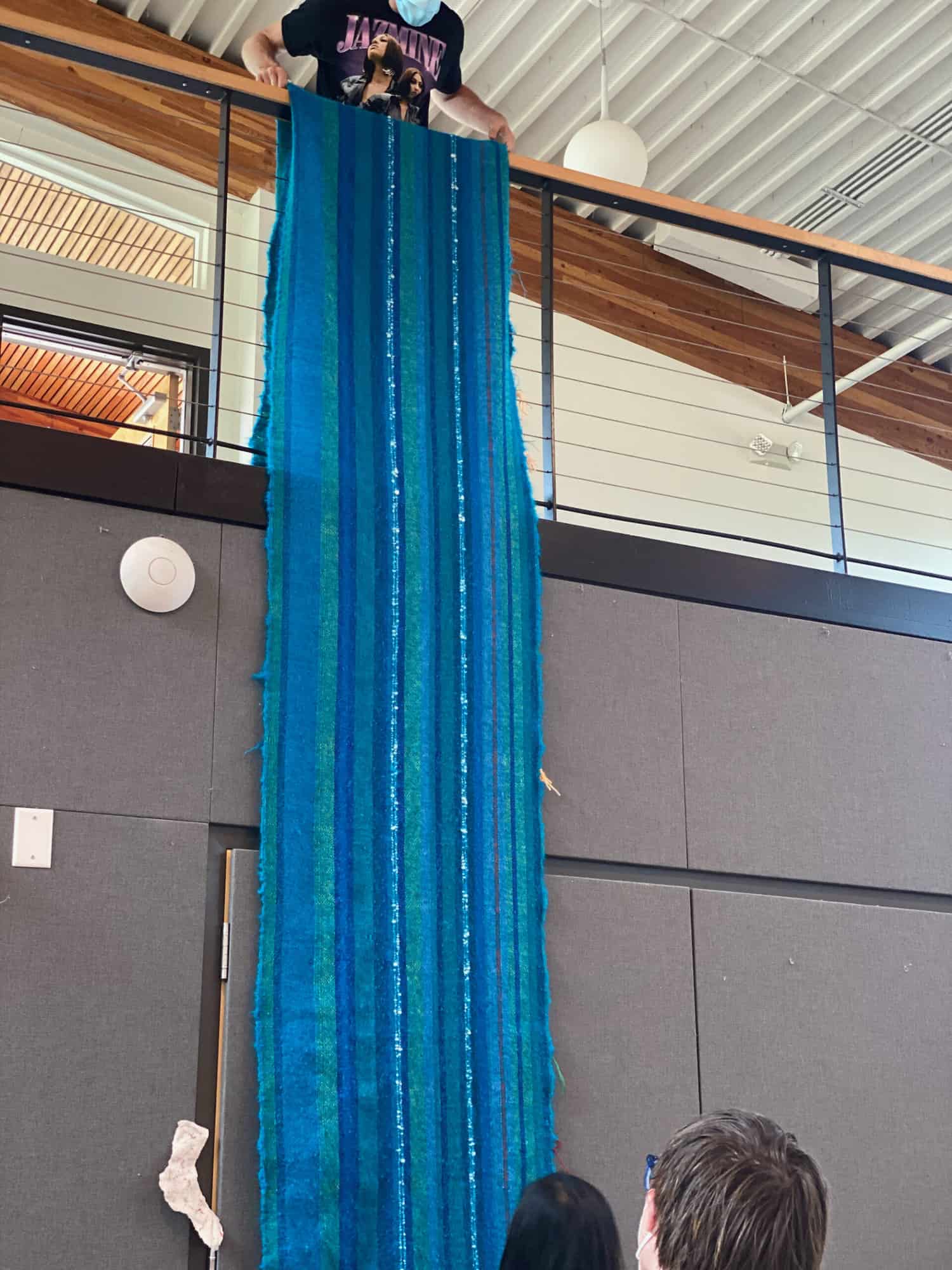
Trust Exercise
Hello Weavers
I have just emerged from planning/teaching a couple of classes that have given me a lot of food for thought. As many of you know, in-class time is a very small (but critical:) part of everything that goes into teaching. From concept to execution, weaving classes consume huge amounts of time. And I am constantly torn between efficient repeats of the old and highly honed favorites where errata in paperwork, class flow and hard questions have been resolved multiple iterations ago, and the new exciting and inevitably rough (yes errata, yes scheduled timings that are way too long or way too short and yes, new questions that stop me in my tracks.)
I work for weeks (sometimes months . . . years?) before a new class thinking about how to approach the material, making handouts and exercise sheets that I think (hope) will clarify murky drafting issues. I weave samples by the yard both to have for class, but also to answer questions I have myself. How will this fiber behave in this structure? What if I opened the sett? What if I alter the tie-up?, etc. And I will often weave a structure before a class just to remind myself how it feels to weave so I can have a better understanding of where students might struggle.
Despite all the planning and prep, every class is full of surprises, good and bad. I can find myself with a class that masters the material much faster than I anticipated, or I can find myself mired in unanticipated loom wrangling, I might have a student who wants to go in an entirely different direction or a student who finds themselves having a hard time with the loom physically, etc. So, I have to make a conscious effort to “fall backward” and trust that my 30 years of experience, my still sorta functioning brain and the good will of weavers (big one!) will catch me.
And while I am busy falling backwards with fingers crossed, I am fully expecting and needing students to do the same.
My recent classes at Penland and Harrisville were largely with people who had either never or rarely woven before, and these are the classes that really crystallized the idea of weaving as a trust exercise in my mind.
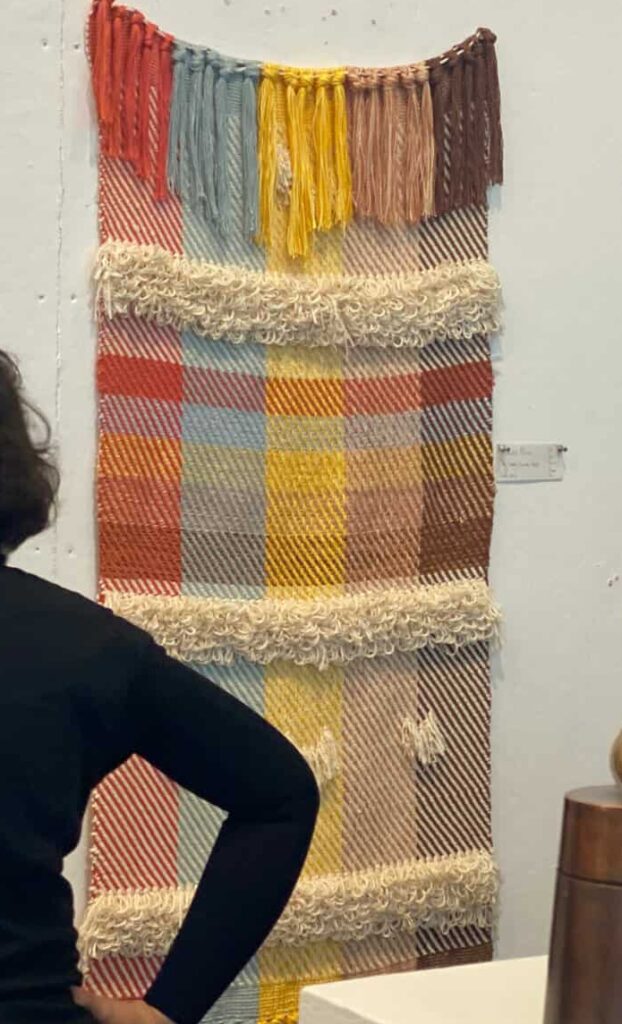
Alex’s Rya
When teaching new weavers or even experienced weavers how my process works from start to finish, I need them to follow me blindly at first. I can and will give explanations and reasons for why I do what I do, but I find that the students don’t yet have the framework to absorb the explanation, they really have to “fall back” and trust that it will become clear in the fullness of time.
A very interesting aspect of teaching is encountering student personalities and being able to tell pretty quickly who is “ready to fall” and who will resist mightily. The resisters will often make stellar weavers because they are analytical and want to know the whys of every step, but they have to get past the hurdle needing to understand and “just do” particularly at the beginning. And the “fallers” are often super quick at mastering the process because they don’t question every step, but they might encounter a hurdle later when they need to alter the system for a new loom or new project.
So, I see value in all of it, and the class mix will often be one of the greatest assets – the analyzers with clarify details for the doers and the doers will help the analyzers move forward. Magic!!
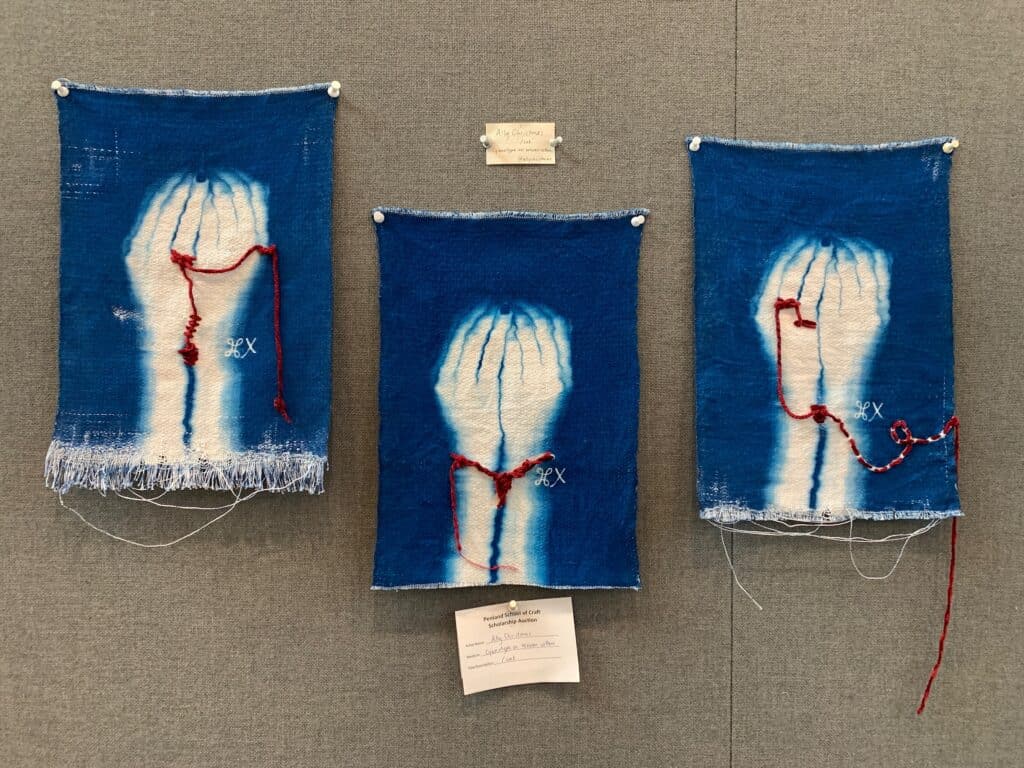
Ally’s rosepath cyanotype
And these two, very different classes – Penland was 2 weeks with a number of participants who wanted to integrate weaving into their art practice, and Harrisville was 1 week with the focus on learning the basics of dressing the looms (again and again) and weaving – were both hugely inspiring and gratifying and exhausting. I don’t want to pander, but my experience is that those who gravitate to hand weaving are already my kinda folk. They are interested in process, creative, thoughtful and patient (they’d better be:)), and those characteristics also make generally nice people. It was hugely gratifying to hand creative minds the tools to make cloth and see them start to explore.
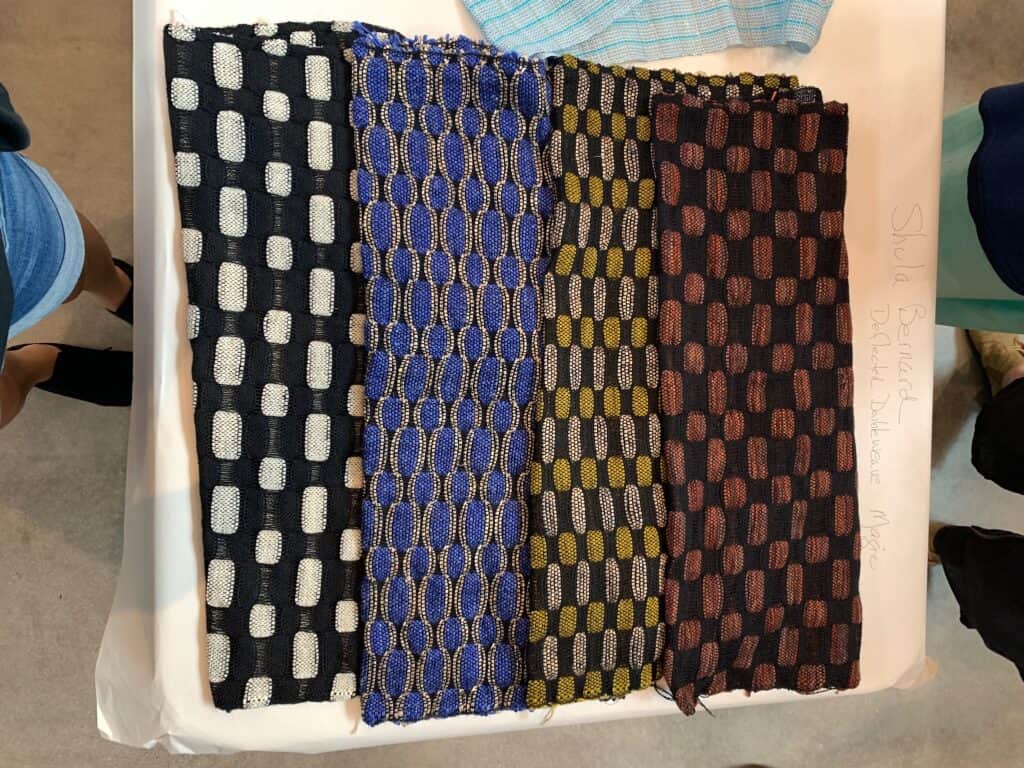
Shula’s Double weave magic pillow covers
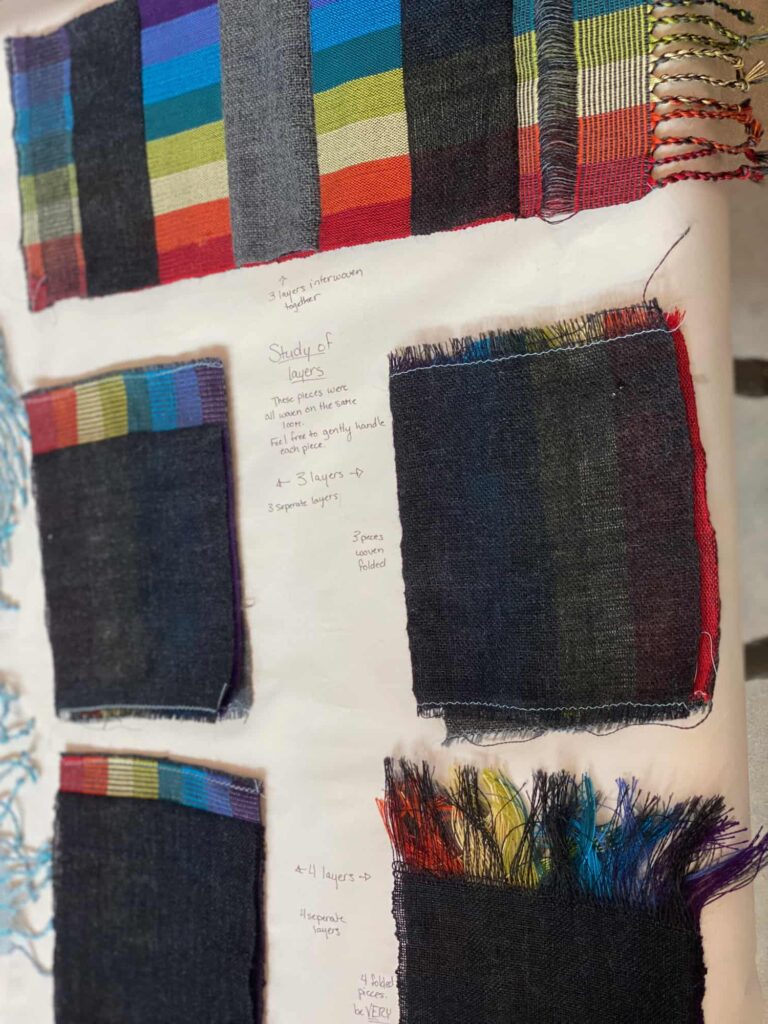
Eva’s 3 and 4 layer samples
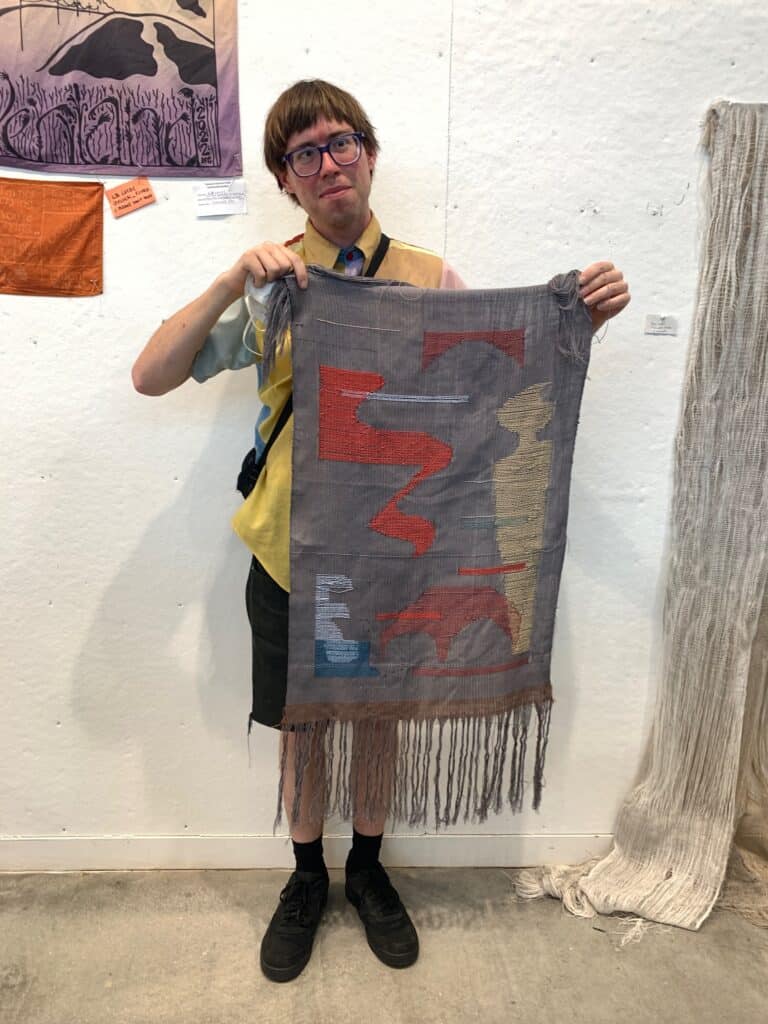
Stephen – new weaver with his Theo Moorman piece
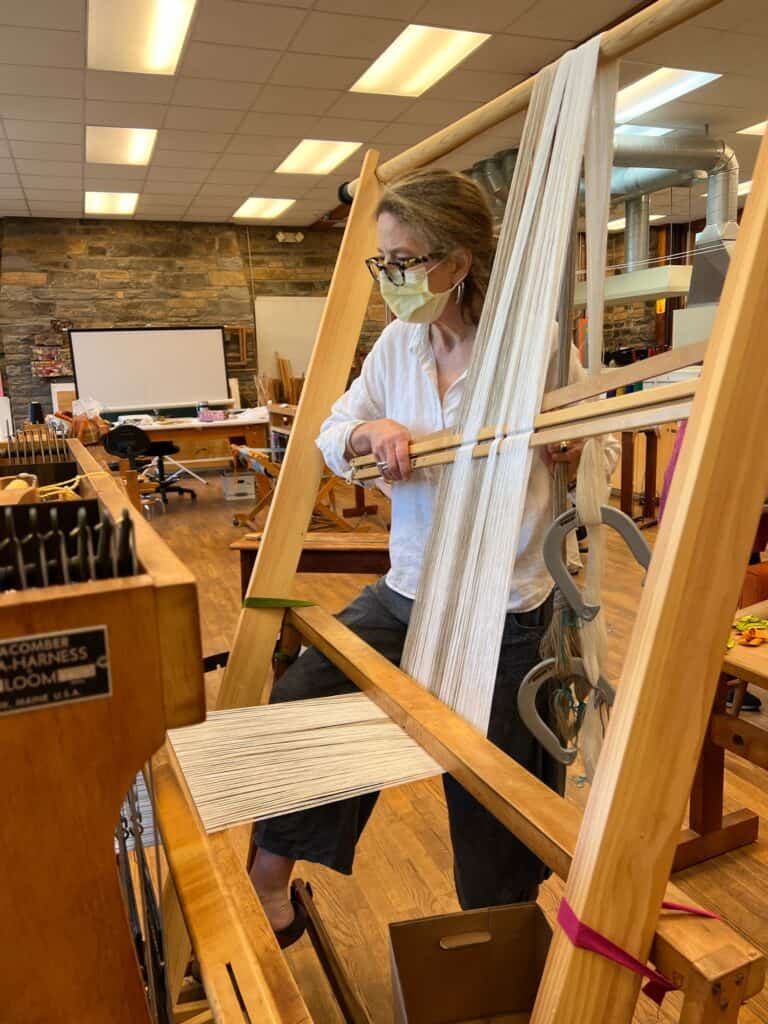
me – masked and wrangling Amy’s triple weave warp with 2 weights of linen and linen boucle – a “please give me a shed” experience
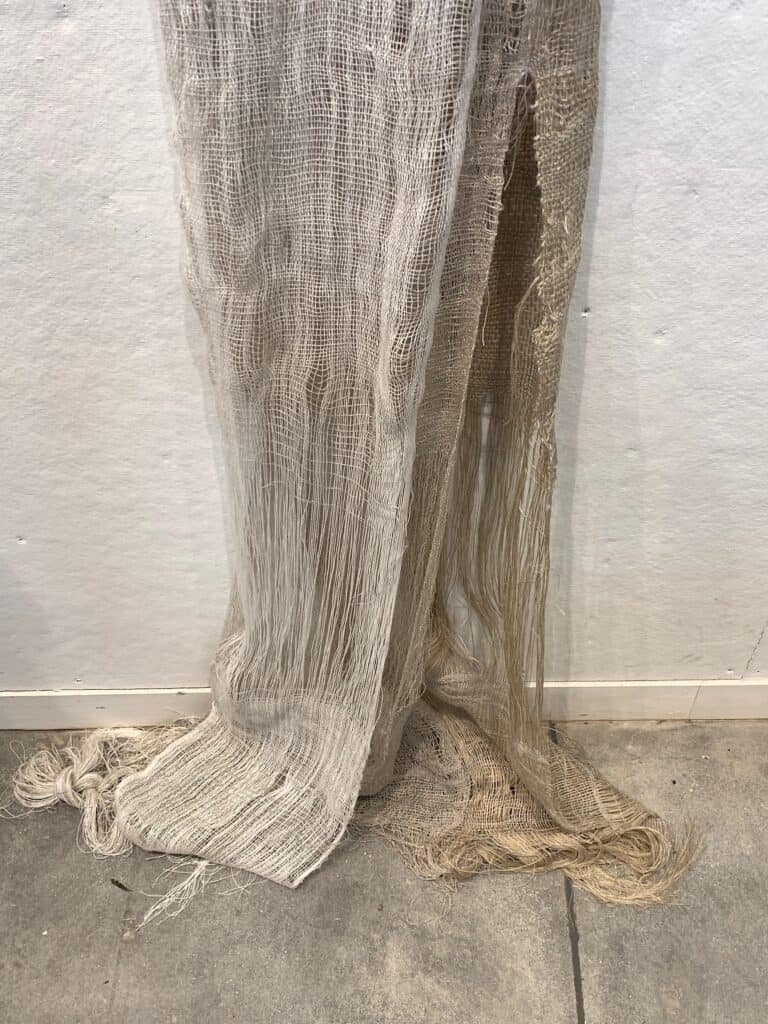
Amy’s experiment – a possible addition to one of her hand-manipulated fishing net art pieces
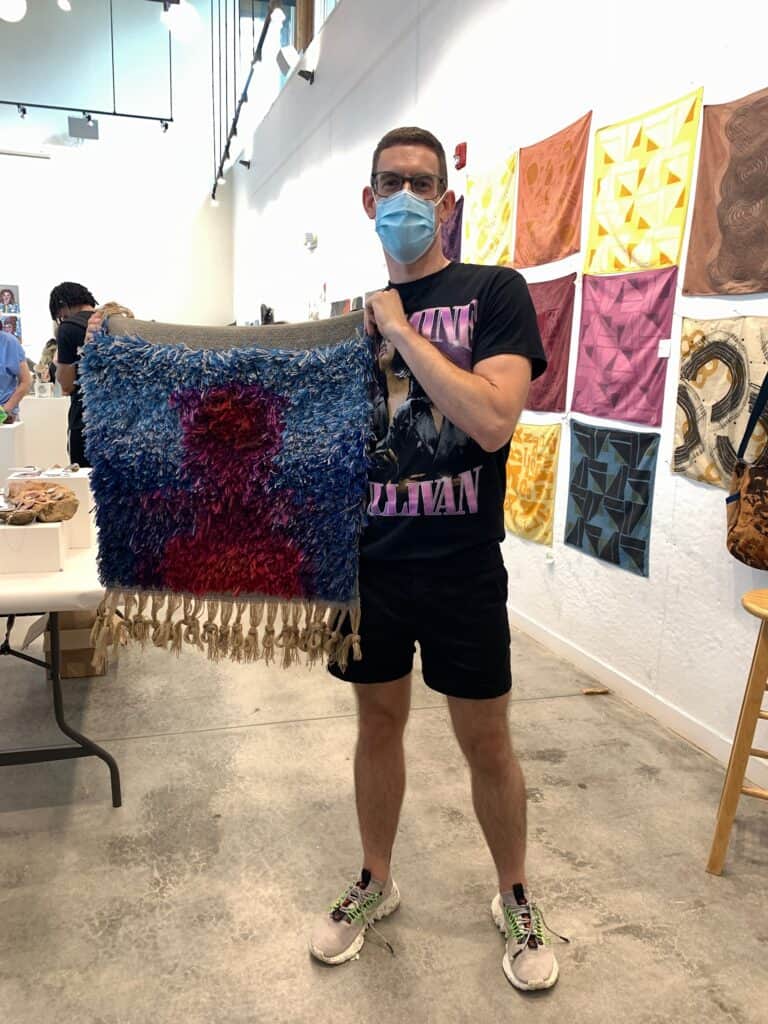
Eric’s gorgeous rya piece – tribute to those lost to aids and in celebration of Penland Pride!🌈🌈🌈
And to continue the (now tired) trust metaphor, I am seeing the whole process more and more as a trust exercise. Every project I put on the loom, is at best an educated guess, at worst a total shot in the dark. “Please give me a shed” is a prayer I have made to my loom frequently as I finish tying on an idea that tests her limits and might or might not work, and guess what? She obliges most of the time, so join me, take a breath and fall!
But before you do . . . take a moment for a pattern plug! There is a new one called Heavy Meta available on the etsy site.Heavy Meta Towels
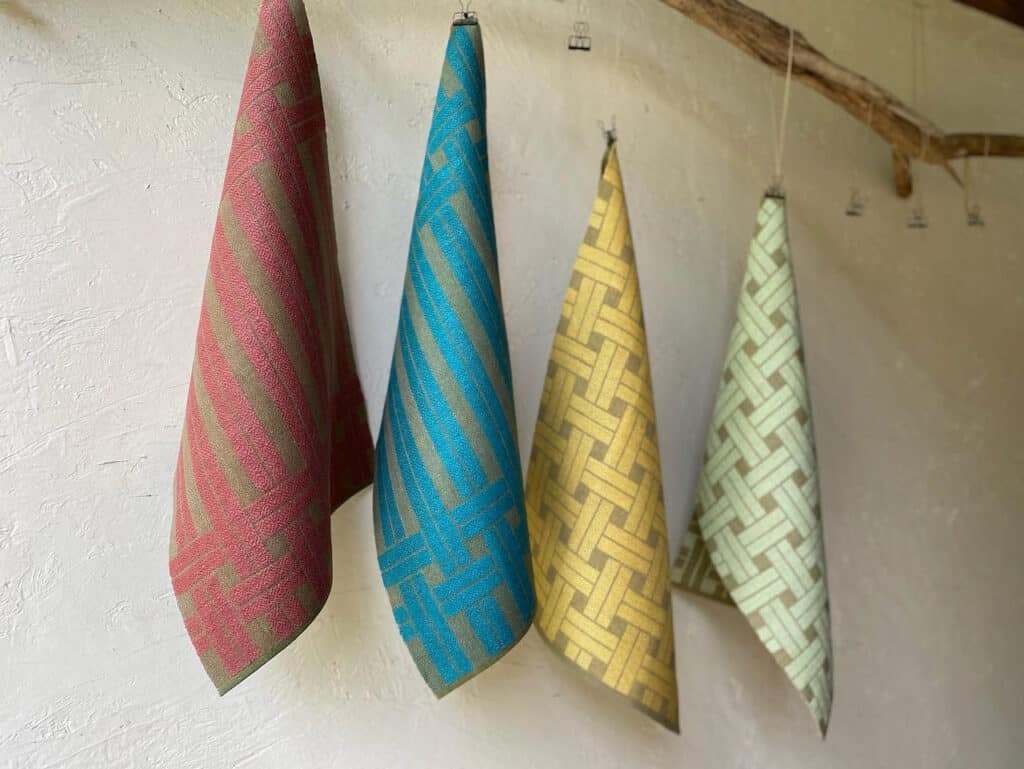
Heavy Meta in Euroflax linen

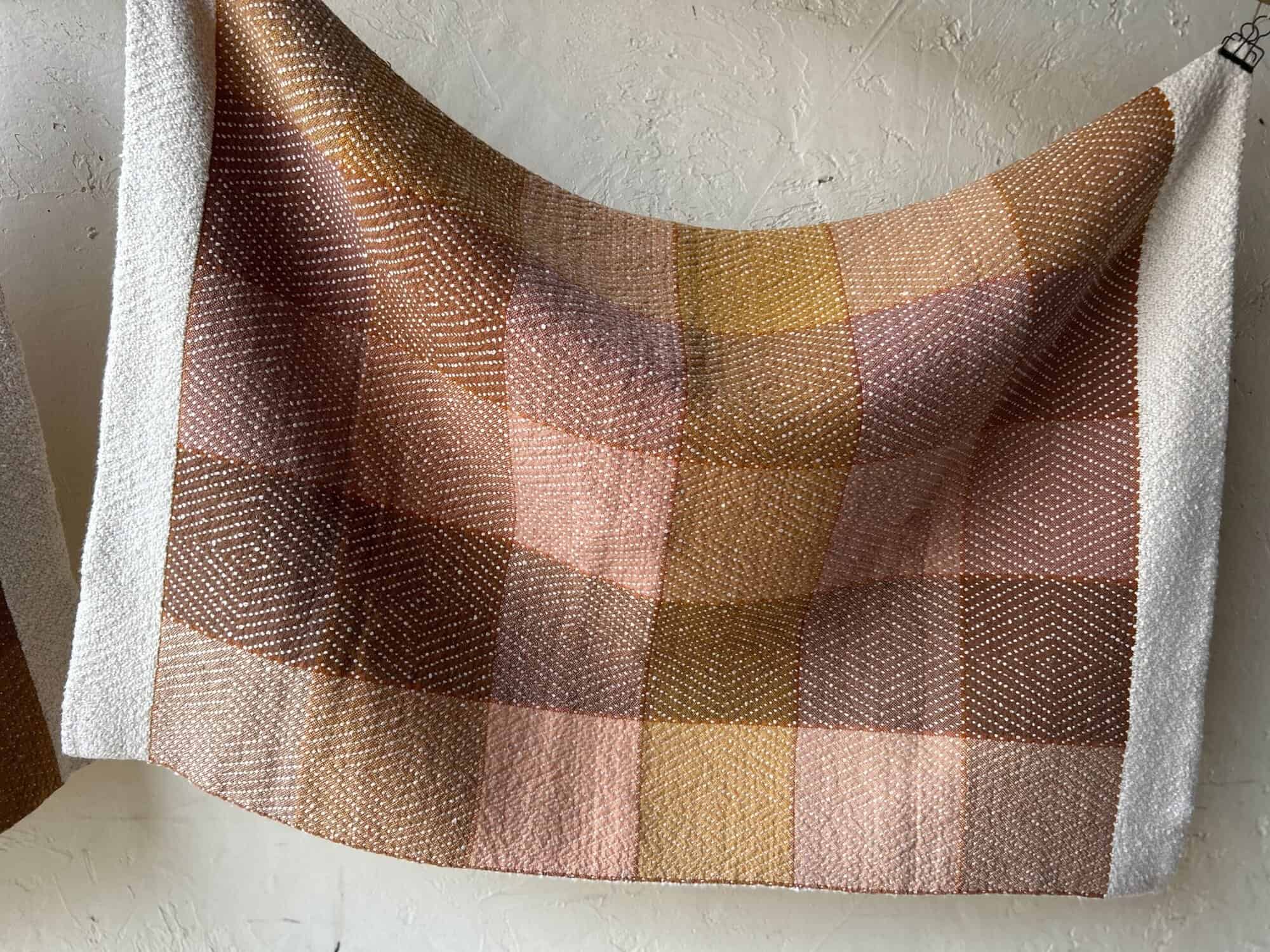
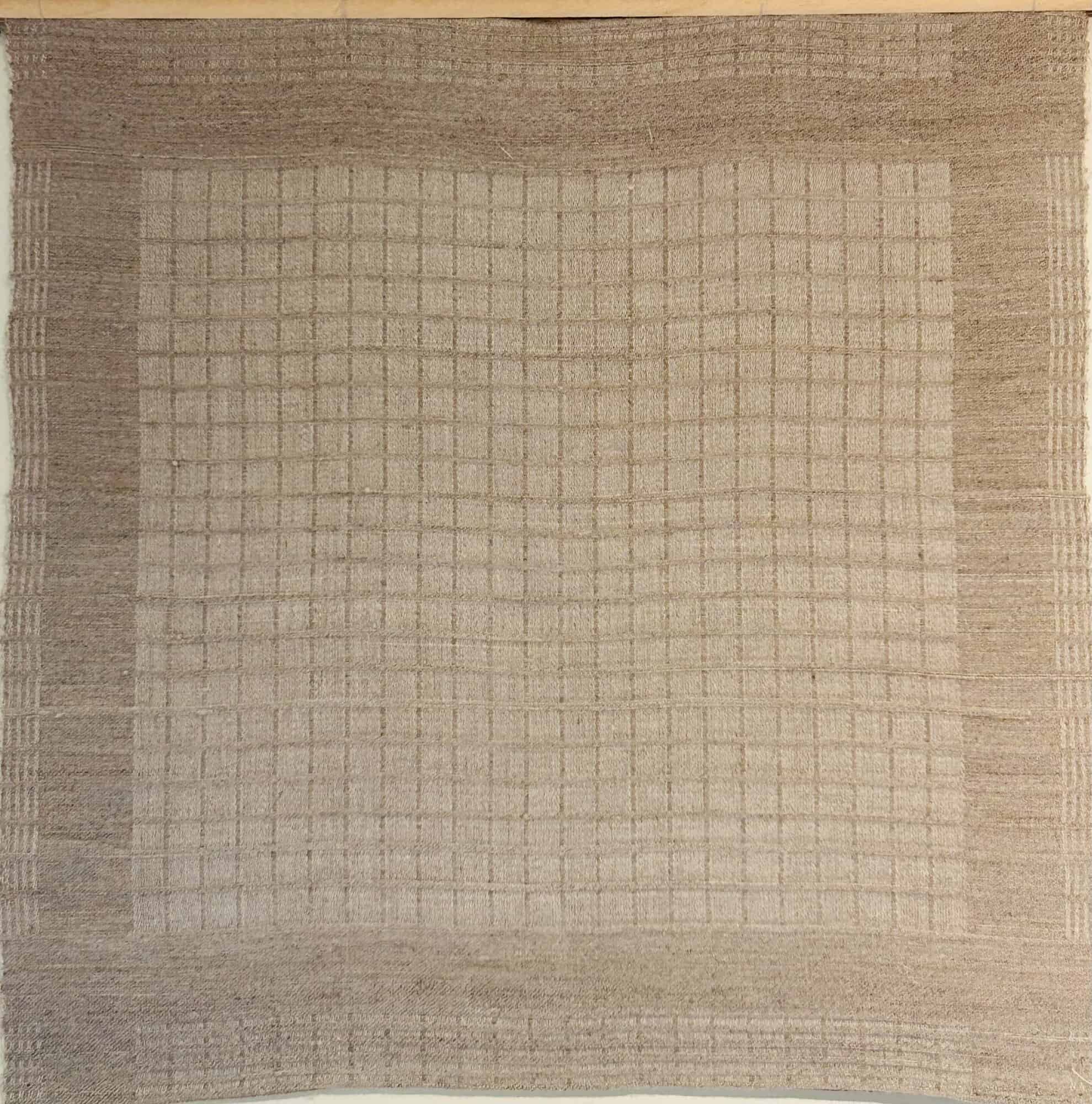
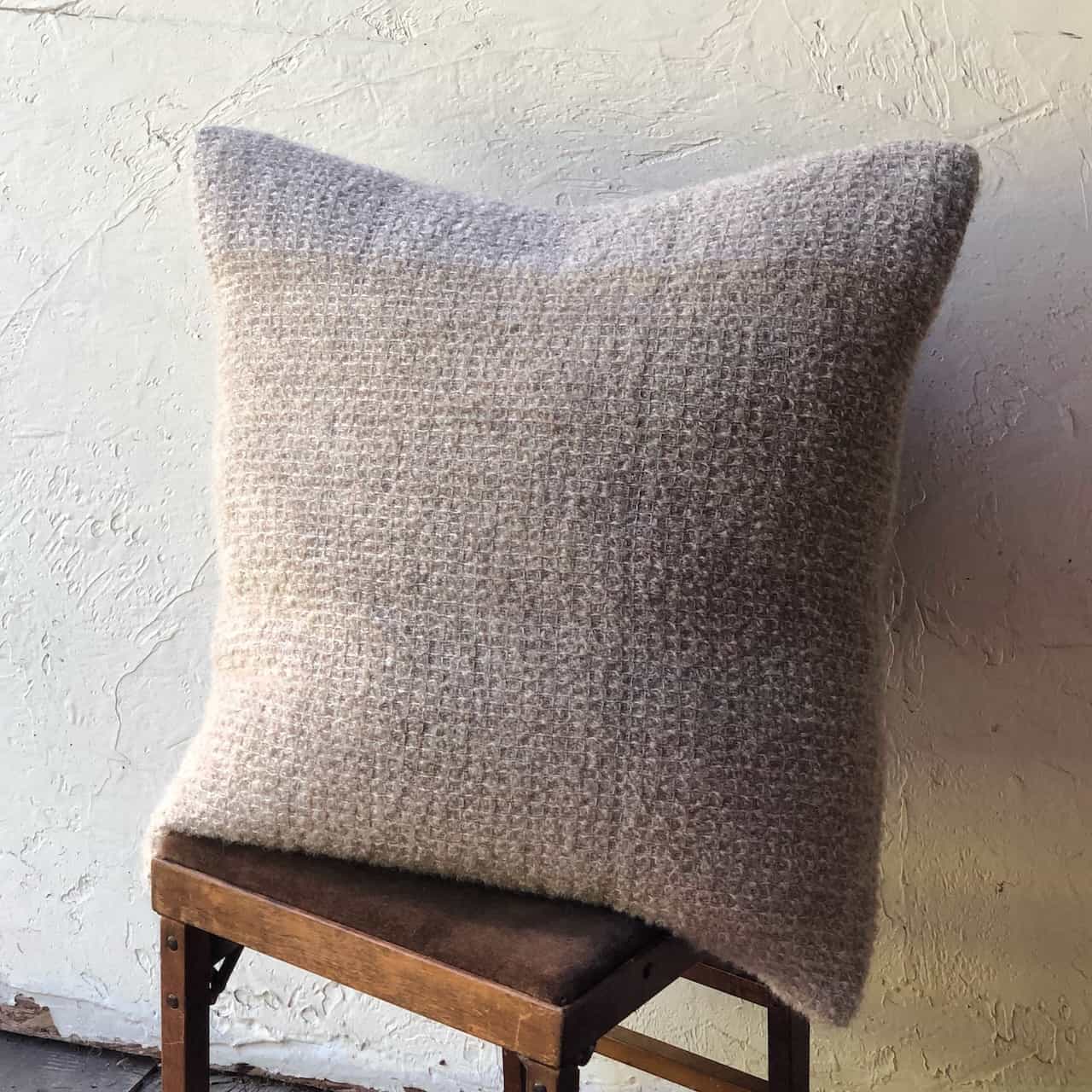
Maureen
Thank you-I always enjoy how you write about your process. Just returning from a workshop this gives me insight as I always wonder how the instructor views us, the students and our questions and struggles.
Another great pattern too!
Elisabeth Hill
Thanks for the comment Maureen! Sorry for the delayed reply. Some glitch in the system seems to have scuppered my comment notification. Re computer stuff – I am a very uncooperative student apparently😂
Barbara Hurley
Lisa, you are so brave to take on such varied students. You are totally correct in establishing that “trust me” attitude in the beginning. Bravo!!!
Elisabeth Hill
Hey Barbara,
Working hard to make sure I’m worthy of the trust😬😂
Margaret
This is great. I have been weaving plain weave for years, mixing yarns of different content, weight, texture, color. my choice of reed size plays to largest yarn so I frequently use an 8 dent or a 6 dent, I design in the reed so I warp from front to back. blending or emphasizing as I go. I am excited to see a workshop that stresses opening your mind to possibilities.
Elisabeth Hill
Hi Margaret,
Thanks for the comment. I’ve warped back to front and front to back and used 2 beams, etc., but I have never improvised in the reed. I’m intrigued by the process – so much potential for design play. Another addition to the weaving bucket list!!
Cheryl Callahan
Thank you for sharing your insight! I am one of the Resistant Types (analytical scientist) and I work hard at listening and doing what I am told. I fight it inside the entire time I am learning. I learn from making lots of mistakes… at least it eventually sticks! Glad to have found your blog.
Elisabeth Hill
Hi Cheryl,
Thanks for your comment and it is good to hear from “the other side”. I am not analytical by nature, but am a skeptic. I used to joke with my mentor that when I cocked an eyebrow at one of her suggestions, I would ultimately agree that she was correct, only it would take me about 5 years to get there. Turns out that mistakes (and a lot of them) work for both sides:))
Jane Gallagher Felix
Your article about weaving with linen is inspiring. It makes me, a novice weaver, feel more confident about taking on projects using this fiber.
Thank you,
Jane
Elisabeth Hill
Hi Jane, thanks for reading and go for it!!! It’s so gratifying in the doing and in having lovely linen pieces to use and see improve and soften with age and use (my favorite kind of things:))
Jane Gallagher Felix
Your article about weaving with linen is inspiring. It makes me, a novice weaver, feel more confident about taking on projects using this fiber.
Thank you,
Jane